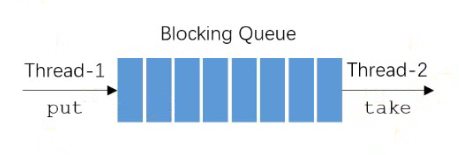1
2
3
4
5
6
7
8
9
10
11
12
13
14
15
16
17
18
19
20
21
22
23
24
25
26
27
28
29
30
31
32
33
34
35
36
37
38
39
40
41
42
43
44
45
46
47
48
49
50
51
52
53
54
55
56
|
public class BlockingQueueTests {
public static void main(String[] args) {
BlockingQueue queue = new ArrayBlockingQueue(10);
new Thread(new Producer(queue)).start();
new Thread(new Consumer(queue)).start();
new Thread(new Consumer(queue)).start();
new Thread(new Consumer(queue)).start();
}
}
class Producer implements Runnable {
private BlockingQueue<Integer> queue;
public Producer(BlockingQueue<Integer> queue) {
this.queue = queue;
}
@Override
public void run() {
try {
for (int i = 0; i < 100; i++) {
Thread.sleep(20);
queue.put(i);
System.out.println(Thread.currentThread().getName() + "生产:" + queue.size());
}
} catch (Exception e) {
e.printStackTrace();
}
}
}
class Consumer implements Runnable {
private BlockingQueue<Integer> queue;
public Consumer(BlockingQueue<Integer> queue) {
this.queue = queue;
}
@Override
public void run() {
try {
while (true) {
Thread.sleep(new Random().nextInt(1000));
queue.take();
System.out.println(Thread.currentThread().getName() + "消费:" + queue.size());
}
} catch (Exception e) {
e.printStackTrace();
}
}
}
|

